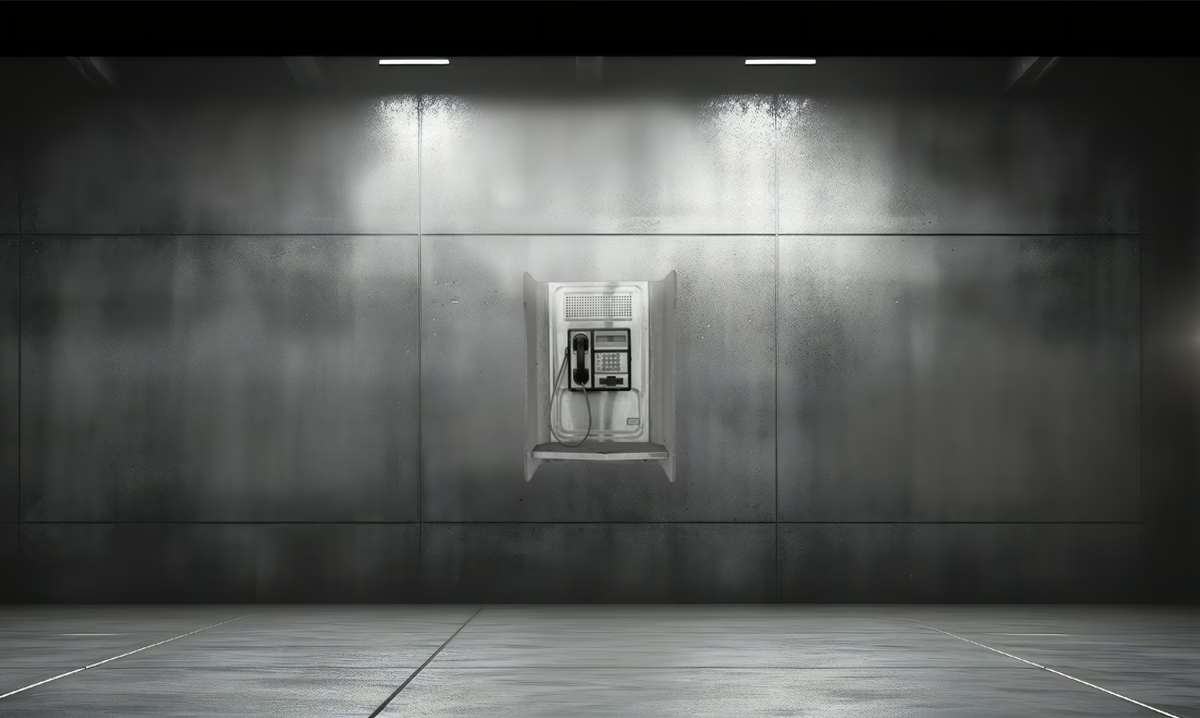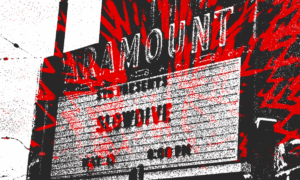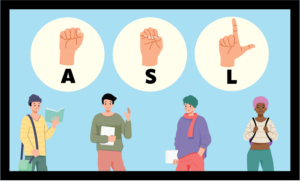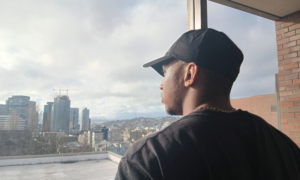The first voice is metallic, monotone, and cold—a digital sentinel at the gate.
“This call is not private. It will be recorded and may be monitored. … To accept this free call, press one.”
A click, a pause thick with surveillance, and then the line opens. A second voice, warmer and quieter, cuts through the static.
“Hello,” it says. “How are you?”
This is the voice of Christopher Blackwell, speaking from a telephone inside the Washington Corrections Center. It is a voice that seeks to reshape the debate over incarceration in America.
Blackwell, 44, is serving a 45-year sentence. From prison, he has become a recognized journalist, advocate, and reformer.
His articles, detailing the realities of confinement, have appeared in The New York Times, The Washington Post, and The Seattle Times. His book, “Ending Isolation: The Case Against Solitary Confinement”—a collaboration with over 40 incarcerated contributors that stemmed from his time in segregation—is a text in the national reckoning over the practice.
A voice found in confinement
Blackwell began writing to make sense of his world.
“I just wanted to publish a piece about a friend,” Blackwell says, recalling his first article for The Marshall Project about a childhood companion who joined a white supremacist gang. “I wanted to share with people how easy it is for someone to shift their life in such a drastic way because they were placed in prison.”
That impulse to humanize became urgent when the pandemic arrived.
“They closed our prison down. They canceled visits and everything. It looked like this was serious,” he remembers. “And I asked my editor at the time, ‘Do you want me to write about what’s going on?’ He said yes.”
Blackwell became the first incarcerated person in the United States to report on COVID-19 from inside prison, his dispatches chronicling the unique experience of a lockdown within a lockdown.
“I realized I could use my access to write for people who didn’t have any,” he says. “I wanted to start highlighting things. I really began looking for ways to humanize people inside. That’s always been my goal—to change the narrative that most of society doesn’t care, so we can think about policy and incarceration differently.”
The journalist in “the hole”
His most searing work was born in isolation.
Blackwell recalls the time he found himself back in solitary confinement—not for misbehavior, but during an investigation into a Native American group he was part of.
“I’ve spent most of my life incarcerated, and I’ve experienced solitary [confinement] countless times. But this time was unique because I wasn’t the bad person. … I went into journalist mode,” he recalls.
He began documenting everything: the mechanics of isolation, the muffled sounds of despair, the boy in the cell next door.
“There was a 19-year-old in the next cell. He had been in solitary [confinement] for over a year. … He was really struggling,” Blackwell says. “He’d go off and get in trouble and get write-ups, and they’d give him more time in solitary [confinement]. They’d pepper-spray him, hog-tie him, and drag him off to another isolated cell. … This happened over and over—at least seven times in a month.”
Blackwell felt he was watching a system break a person in real time.
“This is not benefiting anybody,” he recalled thinking. “What they’re doing to this kid is going to cause irreparable damage to him as a human being and leave everlasting PTSD. … He’s definitely going to go back into the community and cause harm.”
“Why would we not help this young kid who’s obviously struggling? He had no structure in his life; he’s never had anybody who’s really been supportive. Instead of nurturing him, I was watching prison guards torture him.”
The experience crystallized his mission.
“I decided I was going to write about it—it was too egregious not to share with the world,” he says. “Then I started reaching out to others, like my friend Kwaneta Harris in Texas, who served almost nine years in solitary confinement for her quote-unquote celebrity status. She had never harmed anybody, never caused any trouble in prison. They just wanted to keep her—a Black woman—in solitary confinement because she was in Texas.”
With the help of Dr. Terry Kupers, a clinical psychologist, and Deborah Zalesne, a law scholar, Blackwell channeled that outrage. “Ending Isolation” is not an abstract critique; it is a polyphonic testament to what contributors describe as the lived experience of psychological torture.
Building power behind the walls
Writing gave him a voice; organizing gave him power.
In 2020, Blackwell co-founded Look2Justice, a grassroots organization designed to connect the incarcerated with the legislative process.
“We wanted to make sure that people inside were informed on a very high level … to get people more engaged, more empowered to understand,” he says.
The organization aims to be a political force. Its newsletter reaches nearly 4,000 subscribers—roughly a third of Washington State’s prison population—and it employs 13 paid organizers inside eight state prisons.
That work is translating into law. In a collaborative effort with other advocates, including incarcerated individuals, Blackwell and his wife, Dr. Chelsea Moore, authored the Juvenile Points Bill. Passed in 2023, it prevents adult courts from using juvenile adjudications to lengthen sentences. According to Blackwell, the law has already reduced average sentences by about 10 years for some; it could affect as many as 800 people if applied retroactively.
That same collective also authored the Emerging Adults Bill, which allows people convicted before age 25 to be reviewed for release after 15 years.
“We know that people commit impulsive crimes at a very young age without thinking through the long-term consequences,” he says. “This bill allows people to get a review and see if continued incarceration serves the interests of justice.”
“People end up in circumstances that often lead them here,” he adds. “If we give people resources … then often people will change their lives and live in a much more productive way.”
A system that breaks
Solitary confinement, Blackwell argues, is not a tool for safety but an entrenched mechanism of control.
“It’s actually very rare that people are in solitary [confinement] for violent things,” he explains. “A lot of the time, it’s for minor issues. They cause zero harm and yet require huge resources to manage. The only benefit to solitary [confinement] is that administrators and prison guards have a stick to use against prisoners—to dominate and have power.”
The practice, he contends, is a moral and fiscal catastrophe.
“It’s super expensive. We’re wasting hundreds of millions of tax dollars keeping people in these kinds of units inside prisons across our country. That money could be spent elsewhere, so people are released more stable, healthy, and able to be productive members of society.”
He adds, “And what I always tell people is, even if you agree with people receiving large prison sentences, I wouldn’t think you agree with people being simply tortured.”
He zooms out, placing this single practice within the $200 billion American carceral state.
“We spend almost $200 billion a year on incarceration in America. We have the biggest prison system in the world. We have 25% of the world’s prison population,” he says. “We tried ‘tough on crime.’ We tried giving people sentences that don’t even exist in their life expectancies. That has not benefited us.”
“If we want to make our communities safer, we need to go to the systems that are helping support people and pull them out of what I like to call ‘living in survival’ mode.”
Risk and resistance
This work is not without risk. “Retaliation when you do this kind of work is real,” Blackwell says. “Including for myself.”
Still, he presses on. From his cell, Blackwell now co-produces a national bus tour with reform advocates, campaigning against solitary confinement in cities from Seattle to Washington, D.C.
“Having the opportunity to educate people about solitary [confinement] is probably the biggest benefit by far,” he says. “And then uniting people nationally to fight collectively against having solitary [confinement] in our country. It’s not about just getting rid of it in New York or Washington or California. It’s about getting rid of it, period.”
His goal is not reform. It is abolition.
“And the federal system, the juvenile systems, the adult systems, ICE detention centers—just us as a country, as a society saying that we don’t condone torturing people, period. That it’s not OK in any form or any fashion.”
Hope, reimagined
When asked what keeps him going, Blackwell’s voice softens.
“I’ve been in this system since I was 12 years old,” he says. “And that doesn’t take away accountability for the harm I’ve caused. But I also know that, seeing how I’ve been able to be successful in other areas, that could have happened earlier in my life.”
“I want to make sure that we change that for other young kids between the ages of 10 and 20—so they can see that someone is willing to invest in them, that we can water those seeds. For me, that’s the most impactful thing … that brings hope.”
His hope is not for himself, but for prevention. He calls them “Transformers,” people who, he believes, can transmute their past harm into a blueprint for a different future.
“If there’s nobody to fill the prisons, we won’t need prisons. So we’ve got to start to work in that area, and we need to do that with the folks inside—who I like to call Transformers—because we’re the people who know how to reach those young kids, because we were those kids, and we understand what they’re going through.”
A new tone, sharp and automated, breaks through the line.
“You have one minute left.”
The line clicks. The passage between worlds closes. But the paradox of Christopher Blackwell remains: the system built to contain one man has instead built his voice; his challenge to American justice echoes from the inside out.
Author

Danika is an aspiring journalist based in Seattle. Born and raised in Jakarta, she has long been drawn to the gravity of stories—the way they hold what might otherwise slip through the day. As editor-in-chief, she approaches her work with curiosity more than certainty, trusting small details to reveal larger truths. For her, storytelling is less about control than attention: a practice of listening closely and noticing what remains after the noise.







Be First to Comment